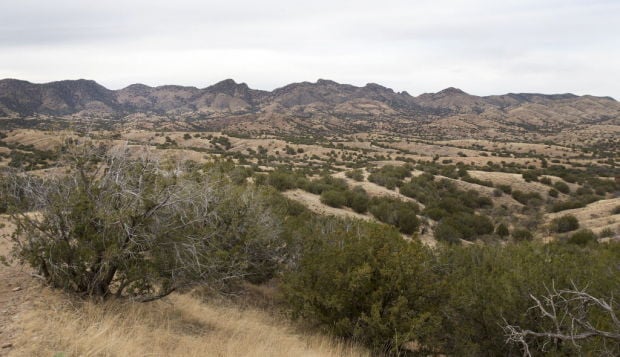The proposed Rosemont Mine will not jeopardize the existence or illegally destroy habitat for 12 imperiled species living in and around the mine site, the U.S. Fish and Wildlife Service said Tuesday.
The agency, however, said it will cause significant adverse effects on many of them.
Its Final Biological Opinion on the mine is one of the key legal hurdles that Rosemont Copper and its parent company Hudbay Minerals Inc. needed to clear before getting final federal decisions on the proposed copper mine in the Santa Rita Mountains southeast of Tucson.
The new, long-awaited report, said that many of the mine's negative impacts on species will be ameliorated by a host of mitigation measures, some new, some previously disclosed. The new ones include the financing of a biologist/project manager for monitoring of impacts on wildlife, a $3 million program to manage and remove invasive species and a $1.25 million program to upgrade habitat for the endangered Southwestern willow flycatcher and the Western yellow-billed cuckoo.
The report acknowledged that the mine's lowering of the water table for creating the open pit could or would dry up a stretch of Empire Gulch. That's a key tributary to Cienega Creek, a nationally recognized stream running east of the mine site. But the report agreed with that U.S. Forest Service's conclusions that the water table decline wouldn't be enough to cause major drying of Cienega even after 150 years. The creeks and surrounding wetlands are home to many of the endangered fish, frogs and birds that were among the species reviewed for this opinion.
But the opposition groups the Center for Biological Diversity and Save the Scenic Santa Ritas both sharply criticized the report, which was released on mid-day Tuesday and said they expect to prevail against the opinion in future litigation. Hudbay Minerals didn't respond to requests for comment on the report.
Both groups criticized the report's conclusion that the mine wouldn't jeopardize or illegally destroy critical habitat for the nation's only known wild jaguar, which has been photographed in the vicinity of the Rosemont site on and off since 2012.
“The agency charged with protecting America’s most vulnerable wildlife thinks it’s just fine for a foreign mining company to harm our only known jaguar," said Randy Serraglio, a conservation advocate for the center. "This outrageous decision, which was contradicted by the agency’s own scientists, will not withstand judicial scrutiny.”





